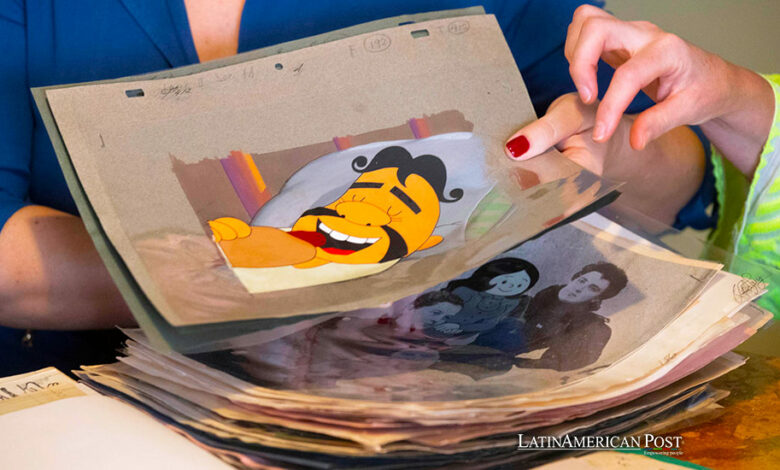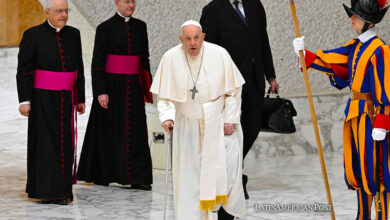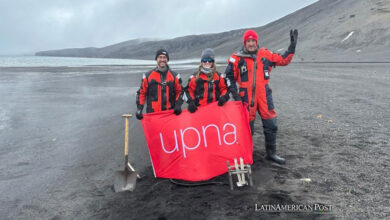Preserving a Legacy: The Digital Resurrection of Cuban Animation

In a humble Havana home, Silvia Padrón meticulously catalogs her father Juan Padrón’s life work, the iconic Cuban animator behind ‘Elpidio Valdés’ and ‘Vampiros en La Habana,’ aiming to digitalize and preserve his influential legacy.
Silvia Padrón, with a heart full of memories and a determination that knows no bounds, sifts through folders stacked in an old kitchen cabinet. Each file bursts with the vibrant history of Cuban animation, a history that is not just a part of her father’s life work, but also a part of her. Her mission is clear: to fulfill her late father’s dream of preserving his extensive work in the animation film industry. Juan Padrón, Cuba’s most celebrated cartoonist, left a legacy that his daughter, Silvia, is not just determined to protect, but also to share with the world.
Preserving a Father’s Legacy: Silvia’s Mission
“Since his passing in 2020, my goal has been to rescue as much of his work as possible, much of which is still here at home,” Silvia reveals to EFE during an interview in her Havana house. She gestures to a pile of unknown drawings and cartoons, each a testament to her father’s prolific career, including his creations like the mambí (Cuban independence fighter) character Elpidio Valdés.
Juan Padrón’s brilliance as a scriptwriter originated from Matanzas in western Cuba. His work, preserved on celluloid, sketches, and drawings, is now digitized by his daughter, who aims to bring greater visibility to his oeuvre. This noble initiative, which transcends borders, is made possible by the technical and financial assistance from the German Embassy in Cuba through a cultural preservation program, a testament to the power of international collaboration in preserving cultural heritage.
“All the work will be done here in Cuba. The only things coming from Germany are the necessary equipment and materials for the process,” explains Vanessa Sánchez, the Cultural and Press Attaché at the German Embassy in Havana. She carefully inspects each drawing, acknowledging the historical and cultural significance of Padrón’s work, including iconic Cuban films like ‘Vampiros en La Habana’ crafted in the very studio they stand. The German Embassy’s technical and financial support is instrumental in this ambitious cultural preservation project.
A Family’s Commitment: La Manigua Initiative
The small studio, nestled in the Padrón family home in Havana, is crowded with books on Cuban and world history, awards from Juan’s extensive career, and an unusual collection of antique revolvers decorating the walls. Silvia, who also leads an initiative called La Manigua to promote her father’s work, shares that the project is still in its early stages of organizing the entire personal archive.
“We’re just beginning to take stock of the documents we have here. Our plan is to create a comprehensive catalog and then proceed to digitize everything,” she explains. This initial phase, which involves identifying and categorizing the materials, is expected to be completed in two months. The entire project, including the digitalization process, is scheduled to be finished by December of this year.
Once the digitalization process is complete, the plan is not just to create an online platform, but a gateway to a treasure trove of knowledge and creativity. This platform will be a place where specialists and those interested in studying Juan Padrón’s work can access all these documents, a digital sanctuary that will ensure the preservation of Padrón’s legacy for generations to come. Vanessa emphasizes the project’s importance: “It’s well worth the effort to rescue and preserve Padrón’s documentary archive because it’s not just exceptional artwork but also adds value by uniting the entire Cuban people regardless of age.”
“If you mention Elpidio Valdés to anyone here, they immediately know who you’re talking about. He’s part of the identity of a people,” the diplomat acknowledges. Most Cubans can recite entire dialogues from the shorts and movies of this mambí, and others are born from Padrón’s creativity and pen.
The transition to television and cinema in the early 1980s solidified Valdés as Cuba’s most renowned animated character. He skillfully depicts the struggle for independence from Spanish colonial rule from 1868 to 1898 with an unmistakably Cuban viewpoint. Padrón’s meticulous research on the uniforms, weaponry, military tactics, and even the diet of the mambises, adds a unique depth to his work, ensuring its enduring quality.
Other memorable characters from Padrón include the protagonists of ‘Vampiros en La Habana,’ a humorous tale about mafia vampire clans fighting over a formula that allowed them to withstand sunlight during the government of Gerardo Machado in the 1930s.
Cataloging the Legacy: A Comprehensive Approach
Padrón’s collaborative efforts with his friend and Argentine colleague Quino also resulted in the creation of the series “Quinoscopios” and “Mafalda y sus amigos,” further highlighting his influential role in Latin American animation.
Also read: Cuba’s Attempt to Transform Economic Landscape by New Business Wave
This endeavor to preserve and digitize Juan Padrón’s works is a tribute to a father’s legacy and a critical step in maintaining and sharing a rich cultural heritage that resonates deeply within the Latin American community and beyond. As Silvia and her supporters continue their meticulous work, they ensure that the vibrant spirit of Cuban animation and its legendary creator will inspire future generations.




